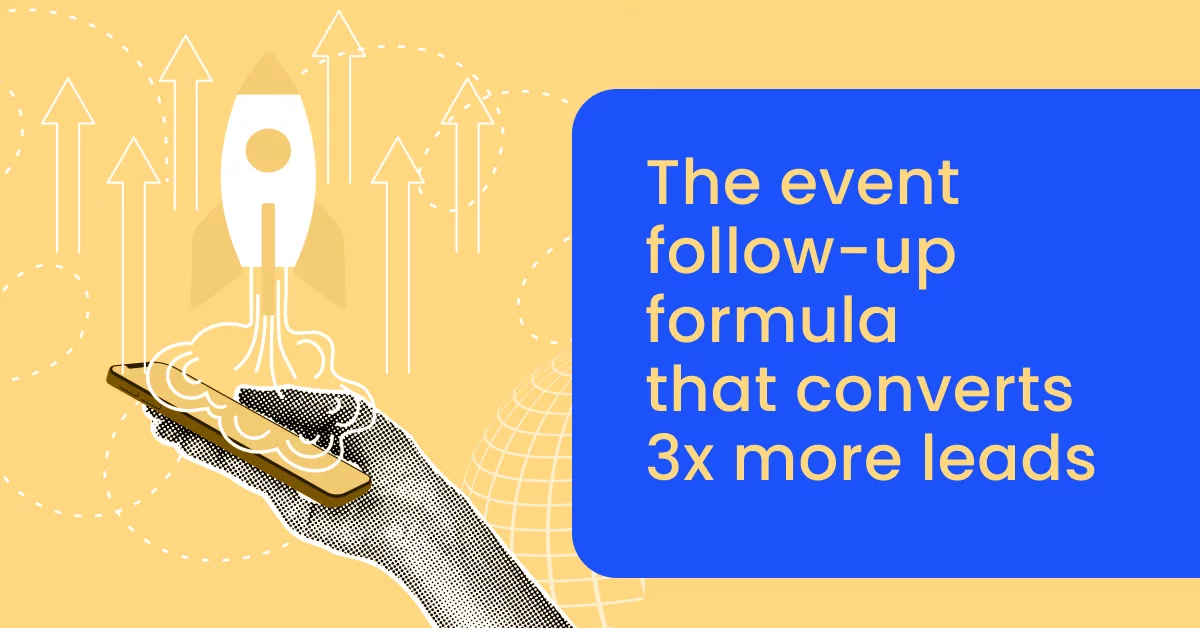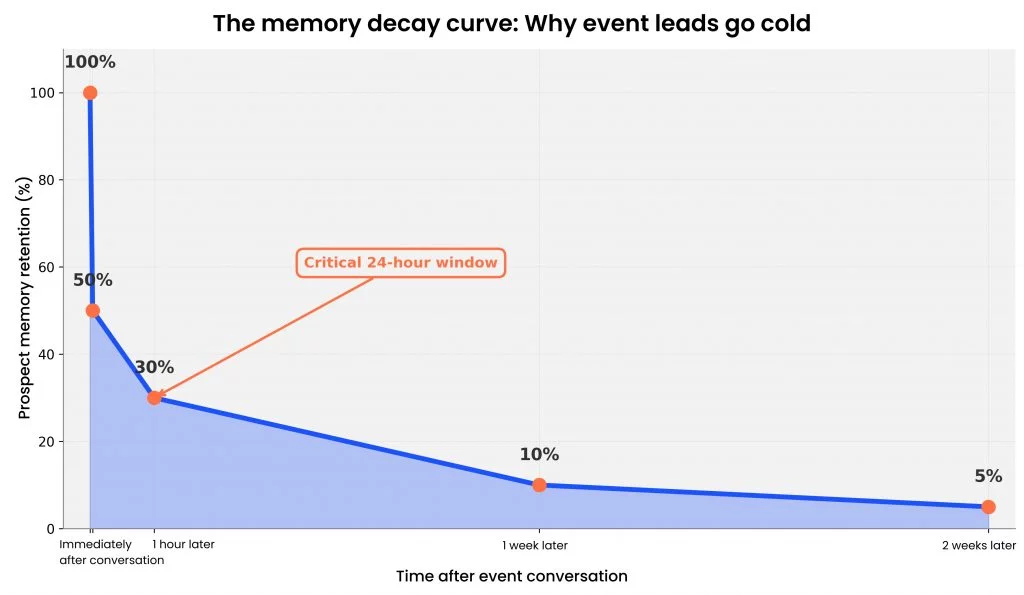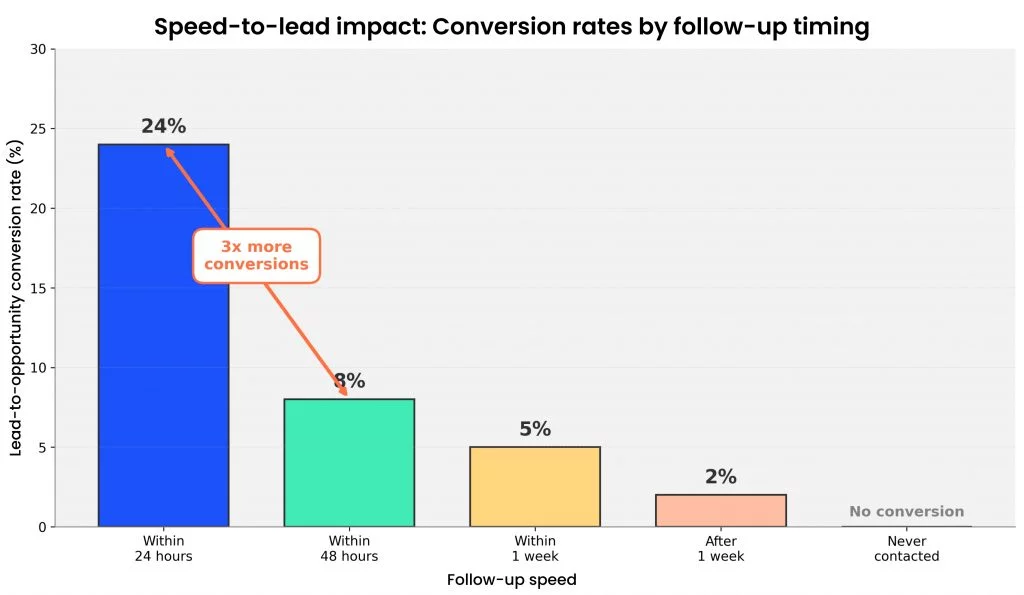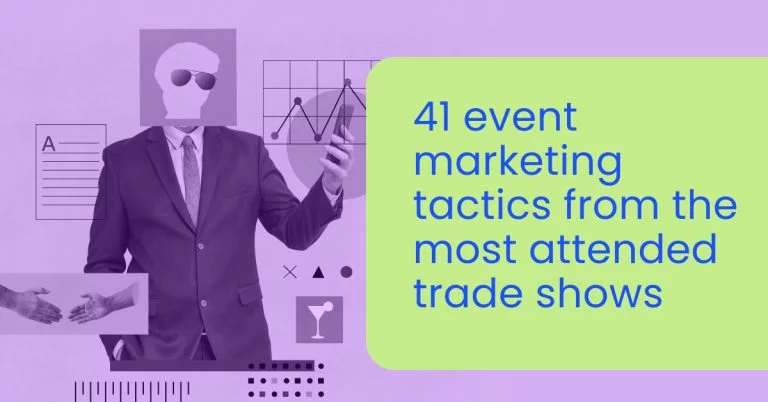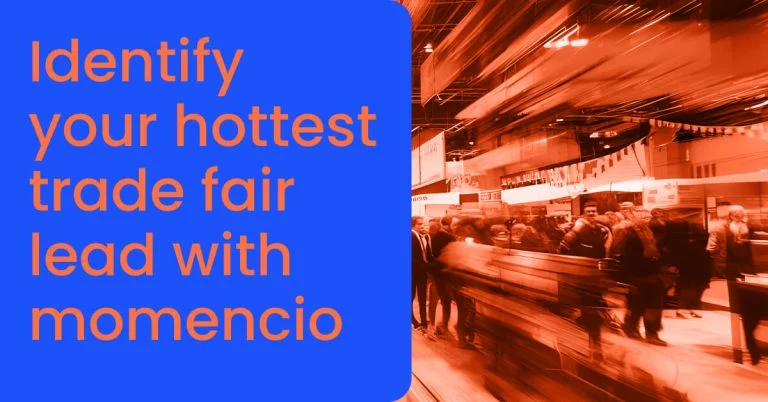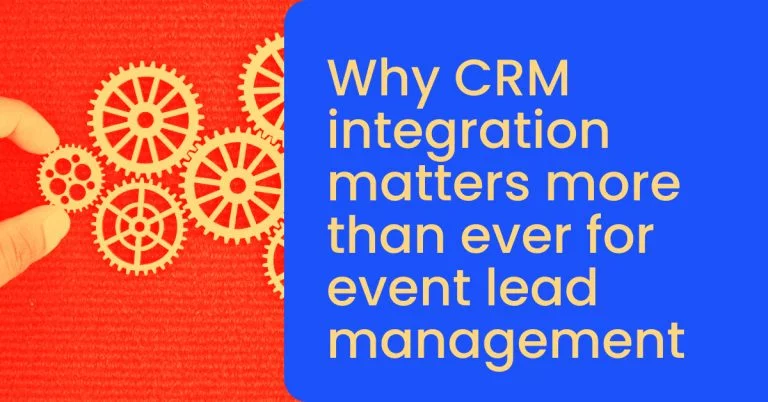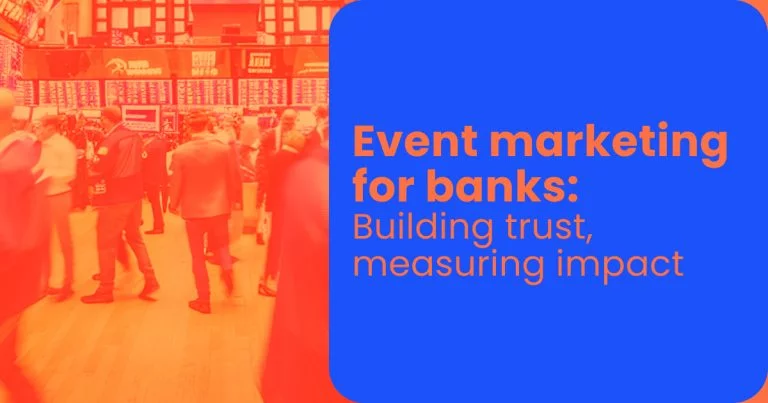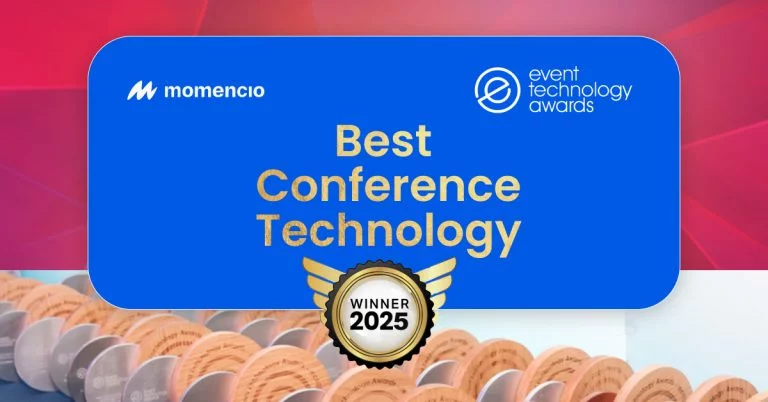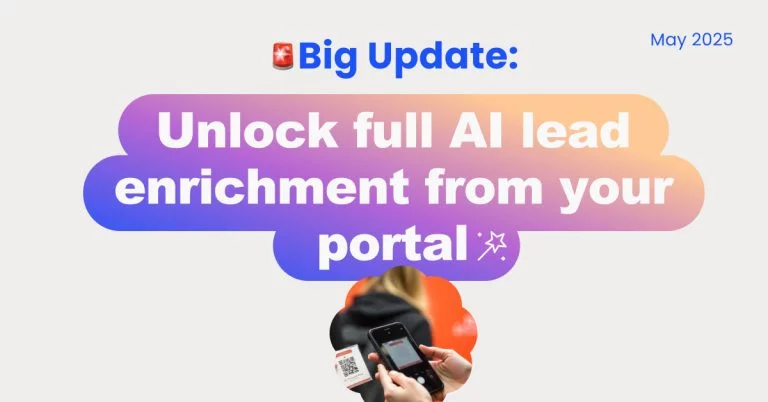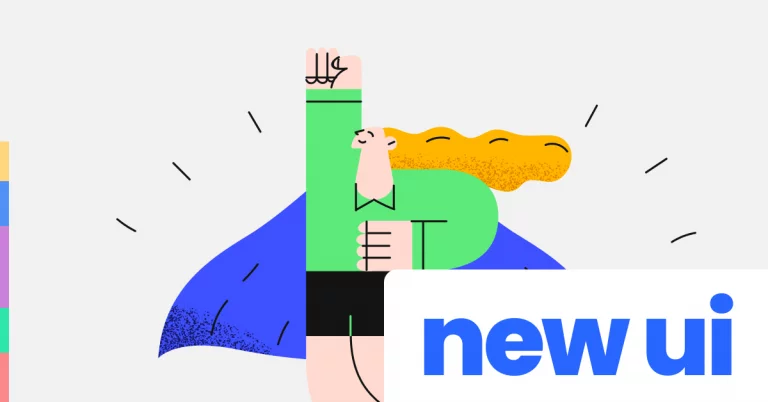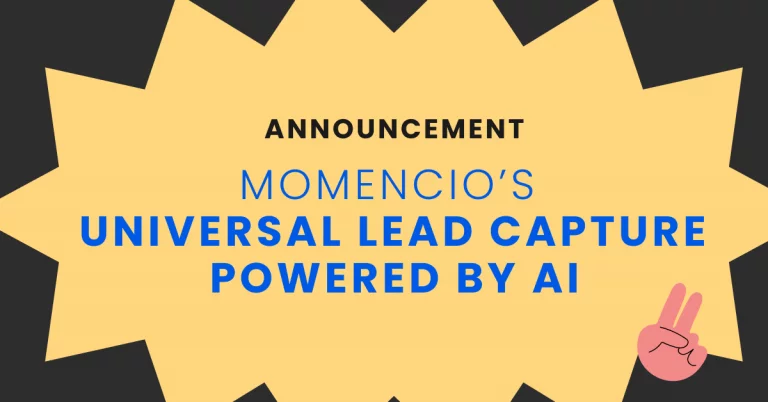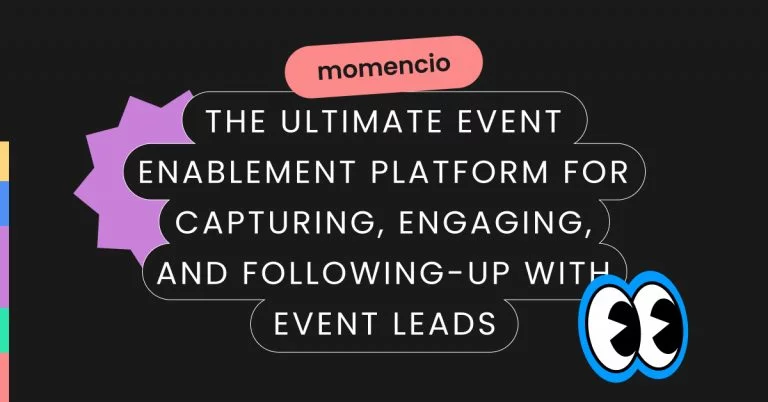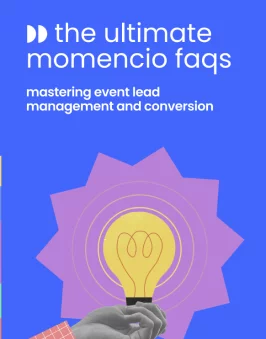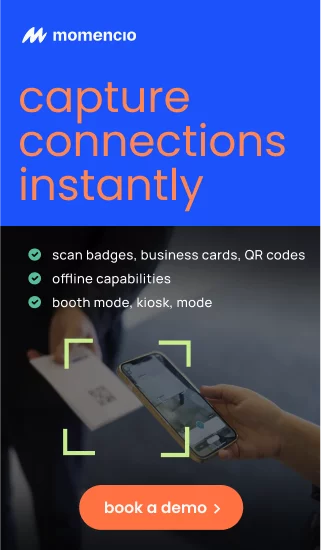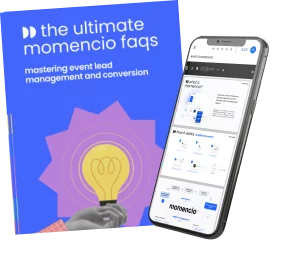You spent months planning the perfect trade show booth. Your team worked the floor for three days straight, scanning badges and having meaningful conversations. You walked away with 247 leads in your CRM.
Two weeks later, your sales team has contacted 34 of them.
Sound familiar? You’re not alone. The average company takes 42 hours to follow up on event leads—and by then, your prospects have already moved on to your faster competitors.
Here’s the truth: speed isn’t just important in event follow-up. It’s everything. Research shows that companies who contact leads within 24 hours convert 3x more opportunities than those who wait even 48 hours. Every hour you delay, your conversion rate drops by 10%.
Why event leads go cold (and it’s faster than you think)
Event leads have a shorter shelf life than any other lead type. Here’s why:
Your prospect visited 40+ booths at that trade show. They had conversations with 15 different vendors. They collected dozens of brochures, scanned countless business cards, and took photos of product demos they found interesting. By the time they get back to their hotel room, it’s all starting to blur together.
Within 48 hours, they’ve forgotten 80% of the conversations they had. Within a week, they can’t remember your company name without looking at their notes. Within two weeks, that initial excitement and intent has completely evaporated.
Meanwhile, your competitors who followed up immediately are already in discovery calls.
The memory decay curve
Psychologists call this the “forgetting curve.” Here’s what happens to your carefully crafted booth conversation:
- After 1 hour: They remember 50% of your conversation
- After 24 hours: They remember 30% of what you discussed
- After 1 week: They remember less than 10% of the details
- After 2 weeks: They can’t recall your solution’s unique value proposition
This is why the follow-up email you send on Monday morning—after a Thursday trade show—lands with a thud. Your prospect reads “It was great meeting you at the show” and thinks “Which booth was that again?”
What your competitors are doing right now
While you’re batching your event leads for next week’s calling session, your fastest competitors are:
- Following up the same day with personalized emails that reference specific conversation details
- Scheduling discovery calls before your lead even gets back to their office
- Sharing relevant case studies and resources while the conversation is still fresh
- Moving qualified prospects into active opportunities in their CRM
The data backs this up. Companies with a same-day follow-up process convert event leads at a 60% higher rate than those who wait until the following week. It’s not because they have better products or more persuasive sales reps—it’s because they strike while the iron is hot.
The 24-hour follow-up formula
Here’s the framework top-performing sales teams use to follow up with event leads before they go cold:
Hour 0-2: capture context while it’s fresh
The follow-up formula starts at the booth, not back at the office.
Your reps should be capturing detailed context during or immediately after every conversation:
- What specific pain points did they mention?
- Which features were they most interested in?
- What’s their timeline for making a decision?
- Who else is involved in the buying decision?
- What’s their current solution and why are they looking to change?
This isn’t about typing long notes into your phone. Modern event lead capture tools like momencio let reps add quick voice notes, tag leads by qualification level, and capture behavioral data (which sessions they attended, which collateral they downloaded) automatically.
The goal: by the time your rep moves to the next conversation, the previous lead’s context is already synced to your CRM with everything your sales team needs for a personalized follow-up.
Hour 2-6: instant automated acknowledgment
Don’t make prospects wait days to hear from you. Send an immediate acknowledgment email while they’re still at the event.
But here’s the catch: this can’t be a generic “thanks for stopping by” email. It needs to be personalized based on the conversation context your rep captured.
A good instant acknowledgment email includes:
- A specific reference to something discussed (“You mentioned you’re struggling with manual data entry…”)
- Relevant resources they asked for (case study, product sheet, pricing guide)
- Clear next steps with a calendar link for scheduling a follow-up call
- Direct contact information for their assigned account executive
This is where automation becomes your competitive advantage. With momencio’s automated follow-up workflows, this personalized email goes out within minutes of the conversation—while your prospect is still walking the show floor. They check their phone during lunch, see your message, and immediately remember the great conversation they just had with you.
Hour 6-24: sales rep personal outreach
This is where the magic happens. Your assigned sales rep reviews the lead context and makes personalized contact within 24 hours.
Here’s what separates high-performing follow-up from the generic noise:
Bad follow-up (what most companies do):
"Hi Sarah, it was great meeting you at the trade show last week. I wanted to follow up and see if you'd like to schedule a demo. Let me know if you have 30 minutes next week."
Good follow-up (what converts 3x more leads):
"Hi Sarah, I'm following up on our conversation yesterday at booth 247 where you mentioned your team is manually entering event data into Salesforce—costing you about 8 hours of post-event work. I pulled together a quick 2-minute video showing exactly how our automated CRM sync eliminates that manual work. [link] Based on what you shared about doing 12 events per year, this would save your team about 96 hours annually—just on data entry alone. Are you free for 15 minutes on Thursday at 2pm to walk through how this would work for your next event? Here's my calendar: [link]"
Notice the difference? The second email demonstrates you were actually listening, provides immediate value, and makes it ridiculously easy to take the next step.
This level of personalization is impossible if your sales rep is staring at a lead record that just says “Met at trade show – interested in product.” But when they have rich context captured at the booth, these conversations write themselves.
The biggest bottlenecks killing your speed-to-lead
Most companies know they should follow up faster. So why don’t they? Here are the five most common bottlenecks—and how to fix them:
Bottleneck 1: manual data entry creates 2-5 day delays
Your event team comes back from the show with a spreadsheet of badge scans. Someone needs to clean the data, deduplicate records, enrich with firmographics, assign to territories, and upload to the CRM. By the time this happens, it’s Tuesday… and the show ended on Thursday.
The fix: Use an event platform that syncs directly to your CRM in real-time. With momencio, leads are in Salesforce or HubSpot within seconds of the badge scan—complete with enriched data, qualification scores, and conversation context. Your sales team can start following up while the event is still happening.
Bottleneck 2: missing context makes follow-up generic
Your rep had a great 10-minute conversation at the booth about the prospect’s specific pain points, budget timeline, and competitive alternatives they’re considering. Then they scan a badge and move on. Three days later, your sales team is calling that lead with zero context, asking basic discovery questions the prospect already answered.
The fix: Capture context at the moment of conversation. Voice notes, qualification tags, product interest signals, and behavioral data (which sessions they attended, which content they downloaded) should all flow into your CRM automatically. Your sales team needs to know more about the lead after the event than they knew during the conversation.
Bottleneck 3: unclear lead routing creates chaos
The leads come in, but nobody knows who should follow up with them. Marketing thinks it’s sales’ job. Sales thinks hot leads go to them and warm leads go to SDRs. Meanwhile, the event team is getting frustrated because their hard work is sitting in a black hole.
The fix: Establish clear lead routing rules before the event. High-intent leads (requested demo, discussed specific use case, gave timeline) go directly to sales within 2 hours. Medium-intent leads (general interest, early stage) go to SDRs for qualification within 24 hours. Low-intent leads (stopped by for swag, no clear need) enter a nurture campaign. Set this up as an automated workflow so there’s no ambiguity.
Bottleneck 4: sales reps are overwhelmed by volume
Your team collected 200 leads at the show. Each sales rep has been assigned 40 leads. They’re supposed to personally follow up with each one within 24 hours. It’s simply not possible—so they cherry-pick the ones that look most promising and the rest get a batch email next week.
The fix: Prioritize ruthlessly using lead scoring. Focus your sales team’s limited time on the 20% of leads that are most likely to convert. Use automated nurture sequences for the middle tier, and let marketing handle the long-term nurture for early-stage prospects. AI IntelliSense, momencio’s behavioral intelligence engine automatically identifies which leads warrant immediate sales attention based on both conversational signals and digital engagement.
Bottleneck 5: no follow-up infrastructure or templates
Every rep is writing follow-up emails from scratch. There’s no standardized process, no templates, no approved messaging. Everyone’s doing their own thing, which means quality is inconsistent and speed is slow.
The fix: Build a follow-up playbook with templates for different scenarios (high-intent vs low-intent, different industries, different pain points discussed). Arm your team with approved messaging they can quickly customize. Better yet, automate the first touchpoint so reps are only personalizing the high-priority manual outreach.
How to measure if your follow-up is fast enough
You can’t improve what you don’t measure. Here are the key metrics you should be tracking for event follow-up:
Average time to first contact
How long from badge scan to first human touchpoint? Industry benchmark: 42 hours. Top performers: Under 12 hours.
If your average is over 24 hours, you’re leaving money on the table. Track this by lead source (trade shows tend to need faster follow-up than webinars) and by sales rep (some reps are naturally faster than others—use them as mentors).
Follow-up rate within 24 hours
What percentage of event leads receive human contact within 24 hours? If you’re below 50%, you have a process problem. Top-performing teams hit 80%+ for high-priority leads.
Conversion rate by follow-up speed
This is the money metric. Compare conversion rates for leads contacted within 24 hours vs 48 hours vs 1 week vs never contacted. You’ll see a dramatic drop-off that proves the ROI of faster follow-up.
With momencio’s analytics dashboard, you can see these metrics in real-time and identify which events, which reps, and which types of leads benefit most from speed-to-lead improvements.
Lead engagement rate
Are prospects responding to your follow-up? Track email open rates, reply rates, and calendar booking rates. Low engagement usually means your follow-up isn’t personalized enough or isn’t arriving fast enough.
Making it happen: your 30-day implementation plan
Improving your event follow-up speed doesn’t require a complete overhaul of your event strategy. Here’s how to make meaningful progress in 30 days:
Week 1: audit your current state
- Calculate your current average time-to-contact for the last 3 events
- Interview 3 sales reps about their biggest follow-up challenges
- Map your current lead flow from badge scan to sales contact
- Identify your top 3 bottlenecks from the list above
Week 2: build your follow-up infrastructure
- Create 3 email templates (high-intent, medium-intent, low-intent)
- Set up lead routing rules in your CRM
- Establish clear SLAs (high-priority: 12 hours, medium: 24 hours, low: 48 hours)
- Document your new follow-up process in a simple one-pager
Week 3: upgrade your technology
- Evaluate your current lead capture tool’s real-time CRM sync capabilities
- Set up automated acknowledgment emails triggered by lead capture
- Configure behavioral scoring if not already enabled
- Test the entire workflow end-to-end before your next event
If your current tools don’t support real-time sync and automated workflows, this is where platforms like momencio become essential. You can’t manually achieve the speed that converts 3x more leads—you need infrastructure that works while you’re talking to the next prospect.
Week 4: pilot at your next event
- Brief your event team on the new follow-up process
- Train booth staff on capturing rich context (pain points, timeline, buying committee)
- Monitor time-to-contact in real-time during the event
- Compare engagement and conversion rates to previous events
- Gather feedback from sales reps and iterate
The bottom line
Event leads are expensive. You’re spending thousands of dollars on booth space, travel, swag, and staff time. Every lead you don’t follow up with quickly is money wasted.
The companies winning in event marketing aren’t the ones with the flashiest booths or the biggest budgets. They’re the ones who follow up fastest with the most relevant, personalized outreach.
The good news? Your competitors are probably still taking 3-5 days to follow up on event leads. Which means you have a massive opportunity to gain an edge simply by being faster.
Start with the 30-day plan above. Track your time-to-contact metrics. And watch as your event lead conversion rates climb.
Because in event follow-up, the early bird doesn’t just get the worm—it gets 3x more deals.
—
Ready to convert 3x more event leads?
92% of event marketers are working towards improving their post-event follow-up strategy. Don’t remain within that 8% bracket. momencio helps event teams capture rich lead context at the booth and automatically sync it to your CRM in real-time—so your sales team can follow up within hours, not days.
See how momencio powers same-day follow-up →
